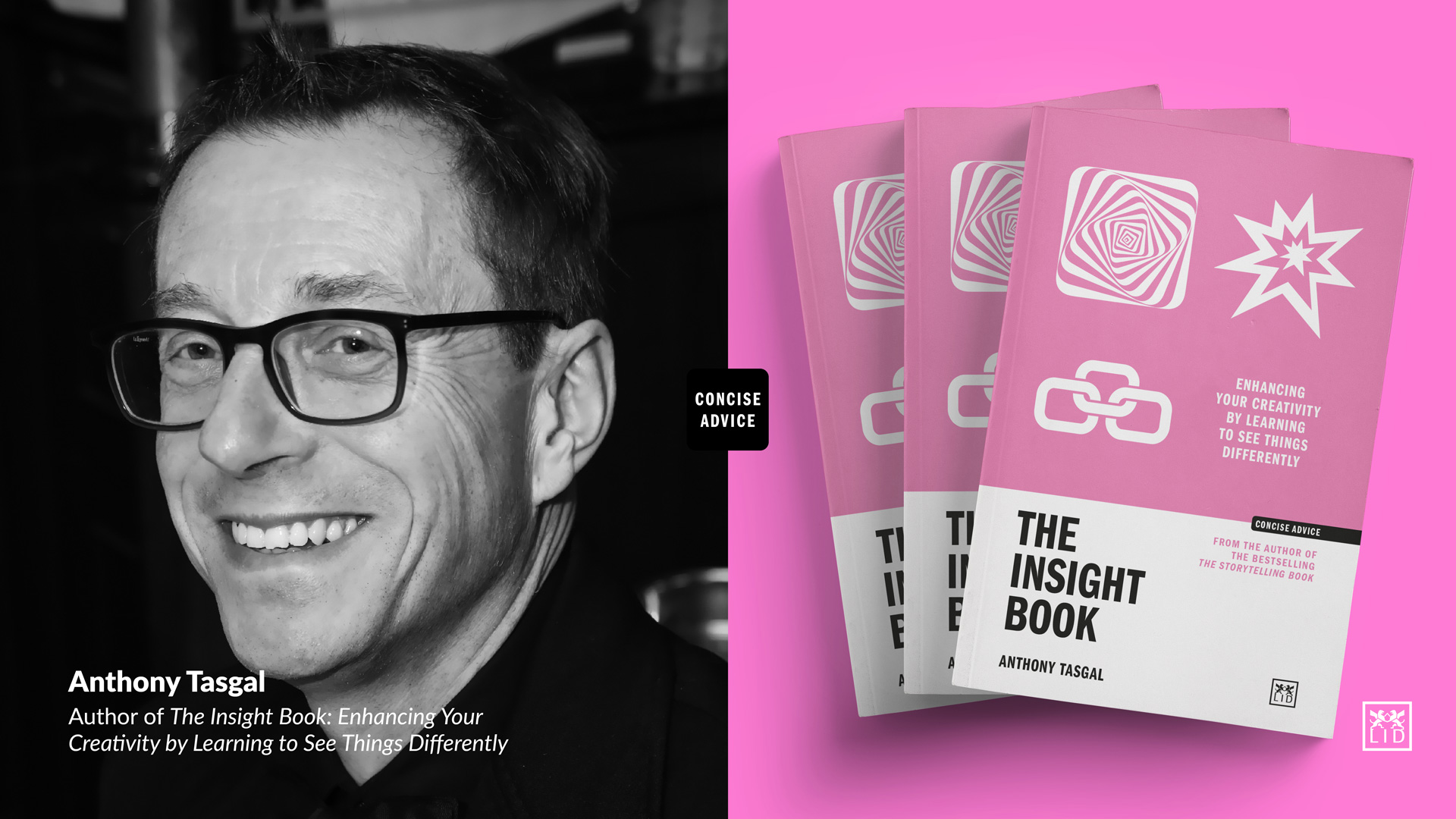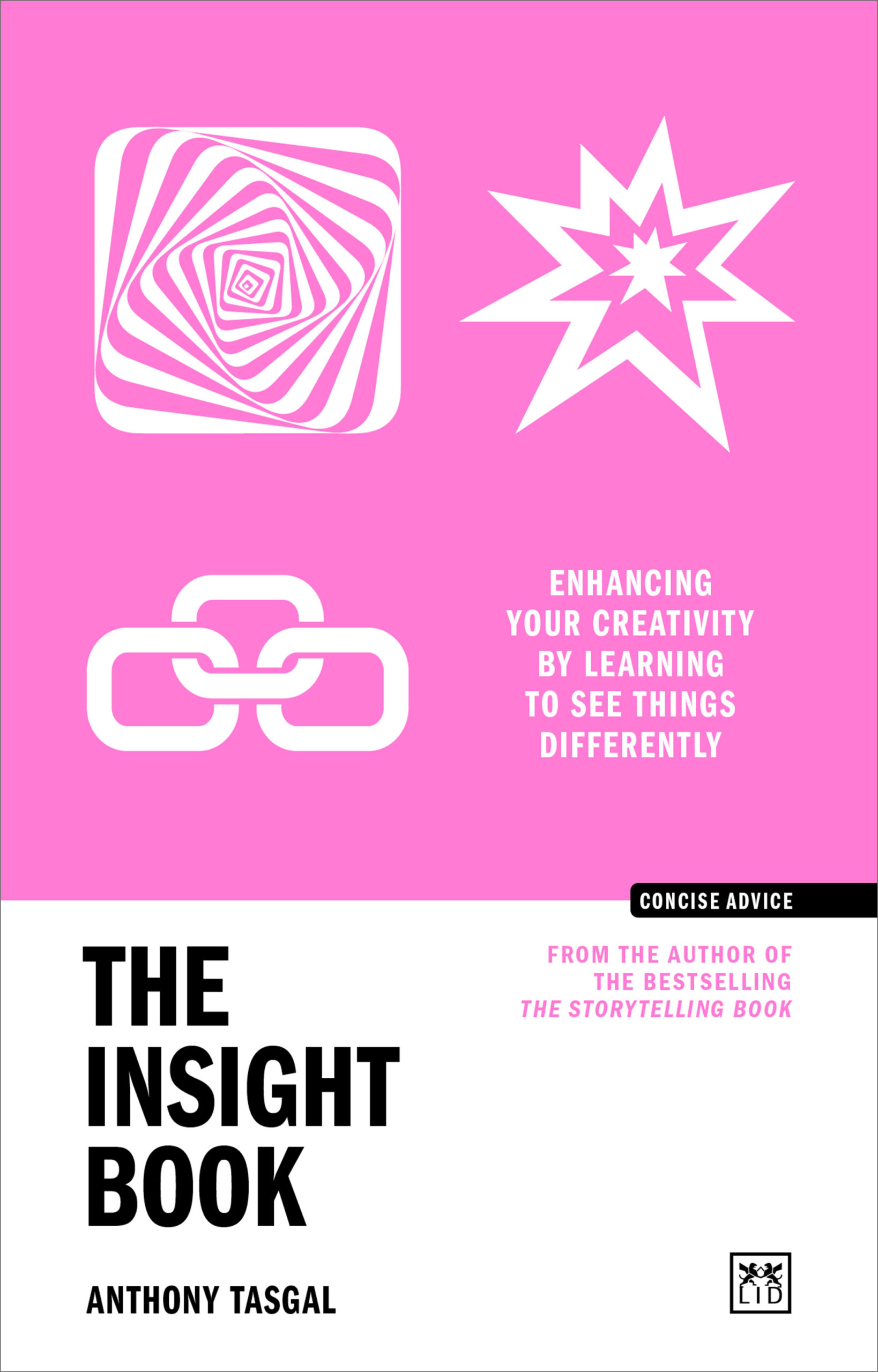|
Why Insight Matters and How To Find It? with Anthony Tasgal
Why Insight Matters and How To Find It? with Anthony Tasgal

By Guest Contributor Anthony Tasgal
Author of The Insight Book, Anthony Tasgal, shares why insight is important in today’s business environment and what we need to find it.
1. Why Insight?
Insight: so much has been written about what it is, why it’s so in demand, how to spot it and even whether it’s just become clichéd and should be struck from the lexicon.
Let’s start with why it has become essential in today’s business environment, which by itself is a reason not to condemn into the circular filing cabinet labelled “cliché”.
One of the greatest challenges for brands, their comms and strategy teams, and their agencies is how to become and/or remain salient. We all know that half the job of any brand or service is to gain and retain attention. Re-framing, re-positioning is one approach for cutting through what I call attention spam (the fact that most of the input to the bin rather than being directed into our attention inbox is instead funnelled into a form of attention spam).
My experience has been that finding an insight- one that is genuinely transformative for the brand- is as good a means as any to carry out this task.
2. What Do They Do?
In the book, I give a number of examples of brands that have alighted up on an insight and what it has done to transform their business either in terms of creating a communications campaign or re-positioning the brand (sometimes both). To glimpse just a few will demonstrate the memorability and effectiveness of the core insight.
Take Marmite’s “love to or hate it”, cutting against the grain of marketing orthodoxy that brands must be universally adored and admired, a beacon of unblemished perfection that the consumer cannot resist. No: instead, the team acknowledged a truth- that some people just hate Marmite (and nothing can stop that feeling) so it’s dishonest to pretend otherwise.
One example I stumbled upon when working with a pharmaceutical research agency, seeking to find the essence of being a doctor (they called it “doctorness” but I won’t).
One doctor I interviewed summed it up simply and mercilessly:
“It’s either coffin or glory”
Brutal perhaps, but a clarifying and honest (self-) assessment: insight at its purest can reduce and bring meaning to the surface.
And thirdly, Sony Bravia. Who can forget the ‘bouncing balls” ad, one of the most memorable TV executions in recent memory (from 2005 since you ask)? Dispensing with all the clichés and conventions (not a bad starting point in the insight recipe), there are no screens, no people and no people staring at screens. No tech, no jargon, no acronyms. Instead, a paean to colour.
3. So, How Do We Find Them?
We can start by untying the knot between data and insight. It is not that insight never requires or depends on data, but rather we mustn’t assume that the only path to insight salvation lies in having terabytes of data, blizzards of charts, graphs and PPTs.
Data in is no guarantee of insight out.
In the book I describe insight as a feeling more than a thing- the sense of (as scientist and sci-fi writer Isaac Asimov put it)- “that’s funny”: a reaction of surprise, (call it actionability, if you feel so inclined).
As I like to put it, information is to be collected but insight is to be connected. One of the key creative insights on insight is that in Behavioural Economics/Kahnemanian terms, we must feed not just rational, factual and linear System 2 but the free-wheeling, unconscious, pattern-seeking System 1.
Insight relies on feeding System 1 and serendipity to do its work powerfully and mysteriously. But we can do that by looking at both an individual and corporate-cultural level.
So, let me finish with a few characteristics for a Seeker of Insight. They should be what Saul Bellow called a “first-class noticer”, someone who combines wit (in both senses) with an instinct for storytelling, who is not afraid to wander and is risk-prone.
But we can also instigate a culture of ‘insightment” at the company level, to engender serendipity, combination and collisions.
One example is by creating what I term PUD [previously unapplied detail] folders as individuals and teams, where we take individual observations, questions ad hypotheses and allow them to percolate between teams.
At the company level, and more topically, I heartily recommend that companies toiling in the field of data, research and strategy [and beyond] should encourage their staff to come into the office for at least 3 days a week.
This is not mere old-fashioned traditionalism, (there seems no doubt the traditional 5-day week is now largely a historical relic for many).
But if we genuinely plan to promote serendipitous collisions and combinations to enable the new connections that are the precursor of insight, then we need more people to be in the office kitchen, the lift or between offices more often.
Then I hope insight will be more prevalent at the individual and corporate level.
ABOUT THE AUTHOR

Anthony Tasgal spent 15 years as an ad agency planner before setting up POV, a strategic brand consultancy. He is a Training Director for the CIM and a Visiting Lecturer at Buckingham, Nottingham Trent and Beijing Normal Universities. He is author of The Insight Book, The Storytelling Book, The Storytelling Workbook, Incitations, and The Inspiratorium (all published by LID). He lives in the UK.
Suggested Reading
 This book is an entertaining, instructive and accessible guide to understanding and deploying insight to see things differently and find creativity from all sources and in all places. Insight has become an important way to gain a deeper understanding of how your customers think and feel about your products and services. The book explains what insight is, why insight is so important (and yet so poorly misunderstood and under-used), and how can we nurture and develop it in our work and even personal lives.
This book is an entertaining, instructive and accessible guide to understanding and deploying insight to see things differently and find creativity from all sources and in all places. Insight has become an important way to gain a deeper understanding of how your customers think and feel about your products and services. The book explains what insight is, why insight is so important (and yet so poorly misunderstood and under-used), and how can we nurture and develop it in our work and even personal lives.
